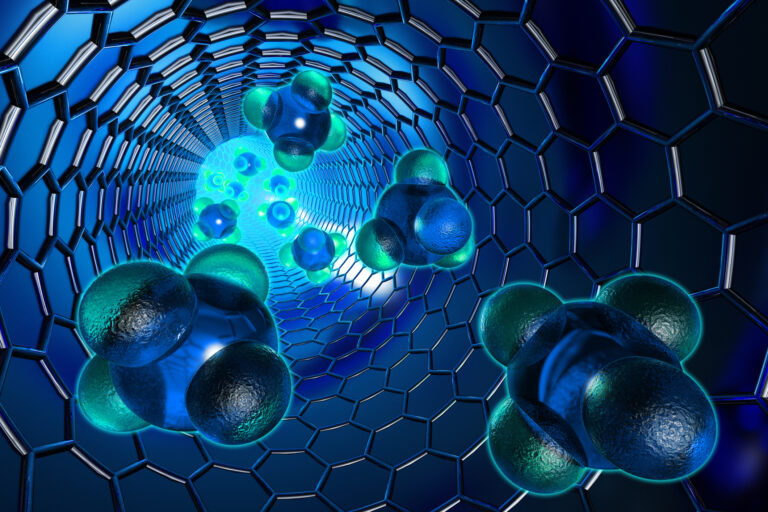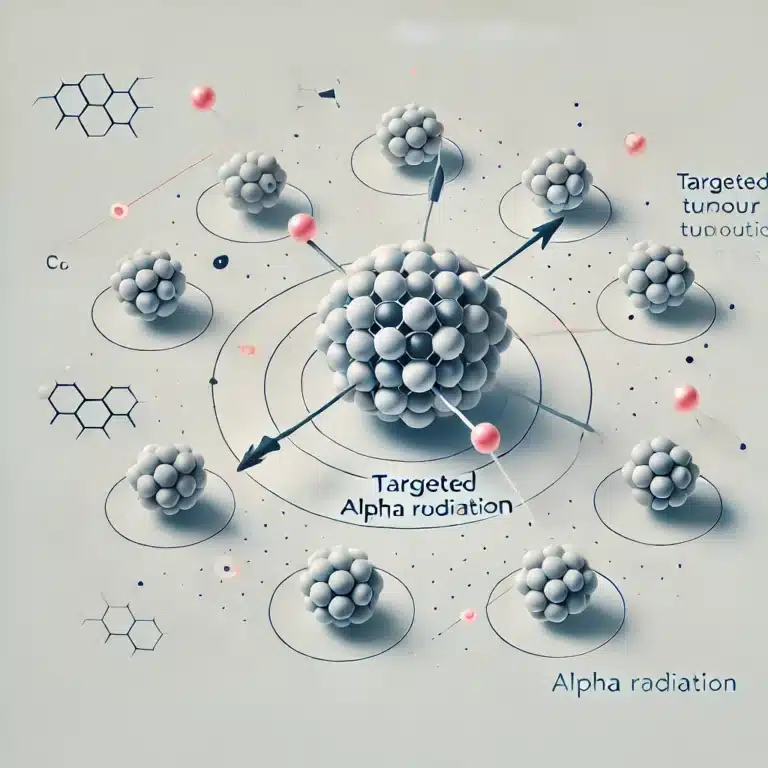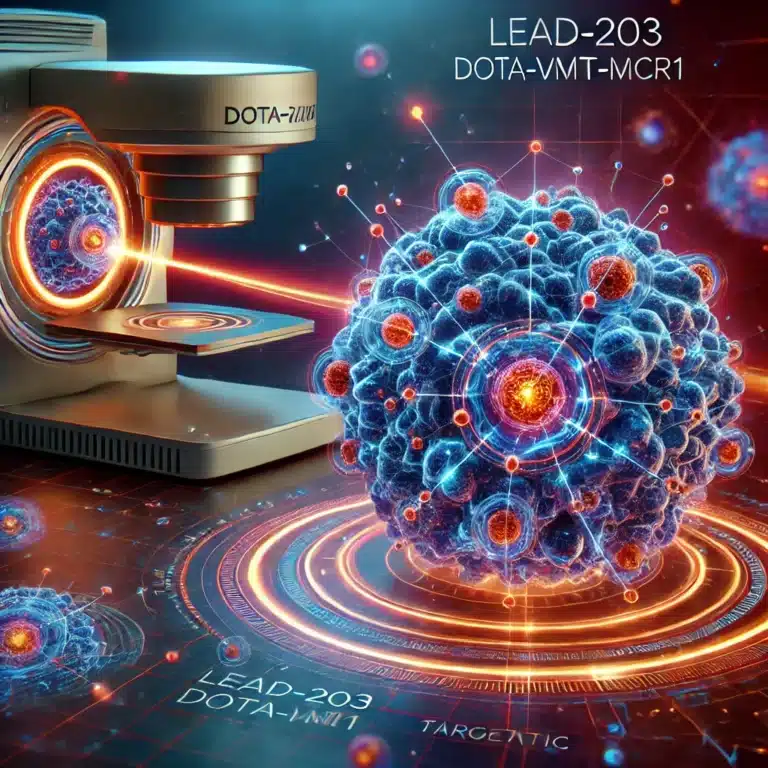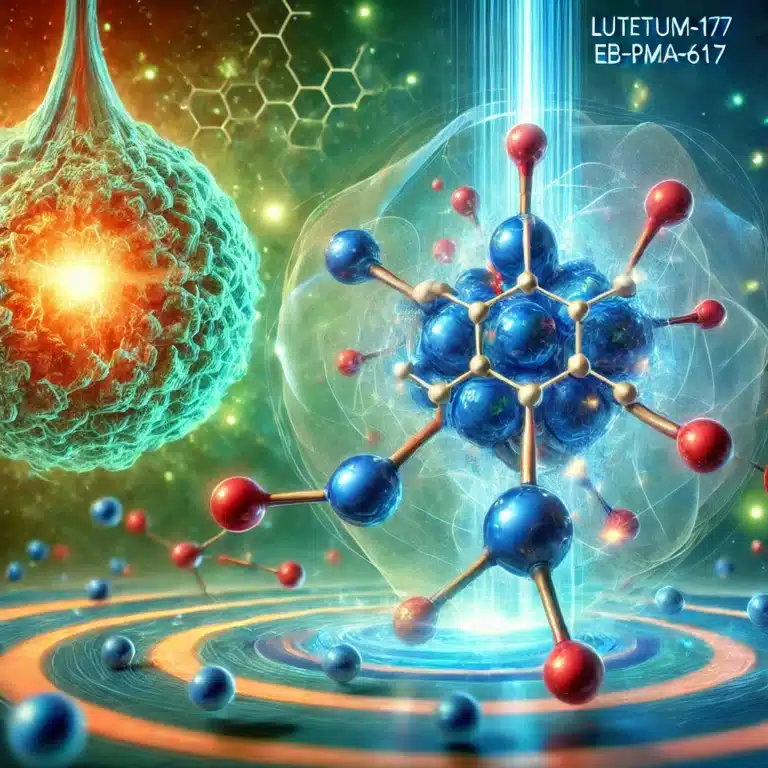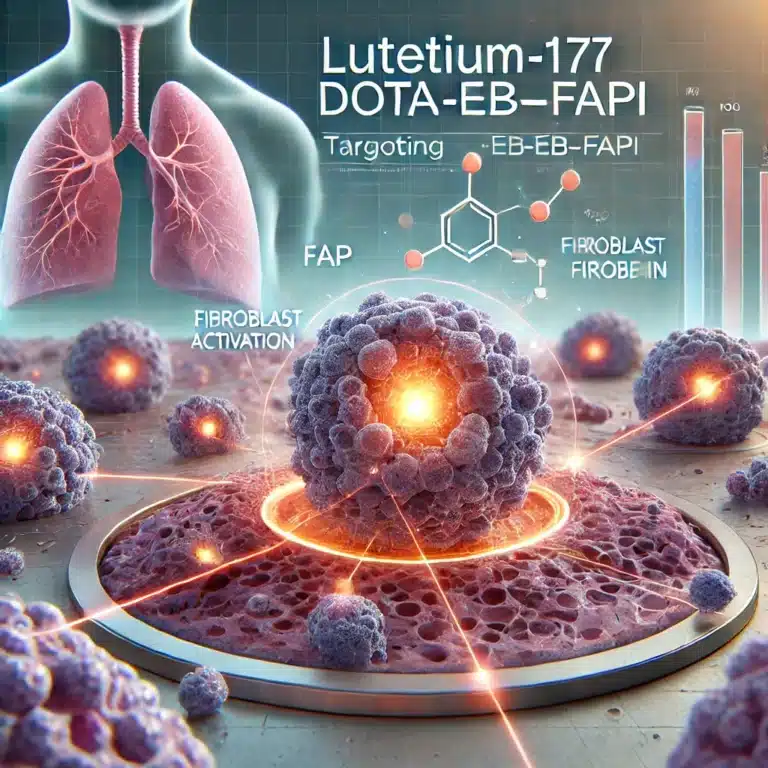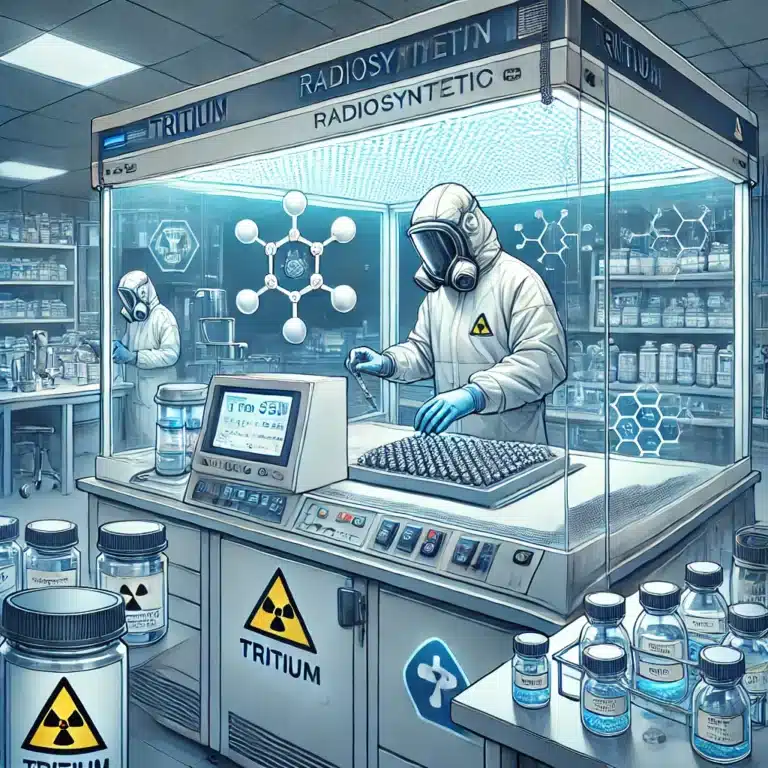Radionuclide Conjugates
Radionuclide conjugates are a sophisticated category of radiopharmaceuticals that harness the unique properties of radioactive isotopes linked to biomolecules. These conjugates are pivotal in diagnostic imaging and therapeutic interventions, particularly in nuclear medicine. Their development and application have opened new avenues in managing and treating various diseases, most notably cancer.
The foundation of radionuclide conjugates lies in the specific targeting abilities of biomolecules, such as antibodies, peptides, or small molecules, which are chemically attached to radioactive isotopes. This coupling allows for the precise delivery of radioactivity to targeted cells or tissues in the body, minimising exposure to healthy tissues. The biomolecule part of the conjugate seeks out and binds to specific markers or receptors expressed on the surface of diseased cells. At the same time, the radionuclide component emits radiation that enables imaging or delivers cytotoxic radiation to destroy malignant cells.
One of the most prominent applications of radionuclide conjugates is in positron emission tomography (PET) imaging, where they are used to produce detailed, functional images of the body. Fluorine-18, a commonly used radionuclide, is often conjugated with glucose to form fluorodeoxyglucose (FDG), which accumulates in high-energy-consuming cells like cancer cells. The result is a highly effective imaging tool that can highlight areas of abnormal metabolic activity, which is crucial for diagnosing and staging cancer.
In therapeutic terms, radionuclide conjugates are utilised in targeted radionuclide therapy. An example is the use of iodine-131-labelled antibodies for treating thyroid cancer. The thyroid gland naturally absorbs iodine, making iodine-131 an ideal candidate for delivering destructive radiation directly to thyroid cancer cells while sparing most other tissues.
Another innovative application involves Lutetium-177 and Actinium-225, which are attached to peptides that target specific receptors overexpressed on tumour cells, such as in prostate cancer treatment. These treatments have shown significant promise, improving survival rates and quality of life for patients with advanced cancer that does not respond to other forms of treatment.
The design and production of radionuclide conjugates involve intricate and sophisticated chemical processes. The conjugation must ensure that the radioactive component remains stably attached to the biomolecule until it reaches the target site. This stability is crucial to prevent the radionuclide from detaching and migrating to non-target tissues, which could cause unintended radiation damage.
Moreover, the development of radionuclide conjugates must also consider the radionuclide’s half-life, ensuring that it matches the clinical application. For instance, a radionuclide used in diagnostic imaging should have a relatively short half-life to minimise radiation exposure to the patient. In contrast, those used for therapy might have longer half-lives to provide sustained therapeutic effects.
Research and development in radionuclide conjugates continue to evolve, driven by advances in radiochemistry and molecular biology. These advances promise to enhance the precision and efficacy of these powerful tools, thereby broadening their applications in medicine and improving outcomes for patients facing serious illnesses.
You are here:
home » Radionuclide Conjugates

